![]()
Of all the cameras that sit in my camera bag, the Hasselblad X1D is the one camera that I never expected to purchase.
But, after my Hasselblad H5 went in for repairs with no return date in sight (more on that later) and I faced an expensive rental bill to procure a replacement for a month-long photo project, I did some math and figured that I could buy the X1D, sell the H5 and put the money I’d have spent renting a camera into this sleek sports car of a camera. After a couple of phone calls and a few days’ wait, a well-boxed X1D and 45mm lens arrived on my doorstop.
While I’ve yet to see how my financial machinations will work out, I have run the X1D through its paces. I’ve tested, poked and used the camera in a number of real world situations. Mind you, I’m not a paid camera reviewer nor a technical guru — just a professional photographer who needs to know whether his tools can handle the jobs they’re called upon to perform.
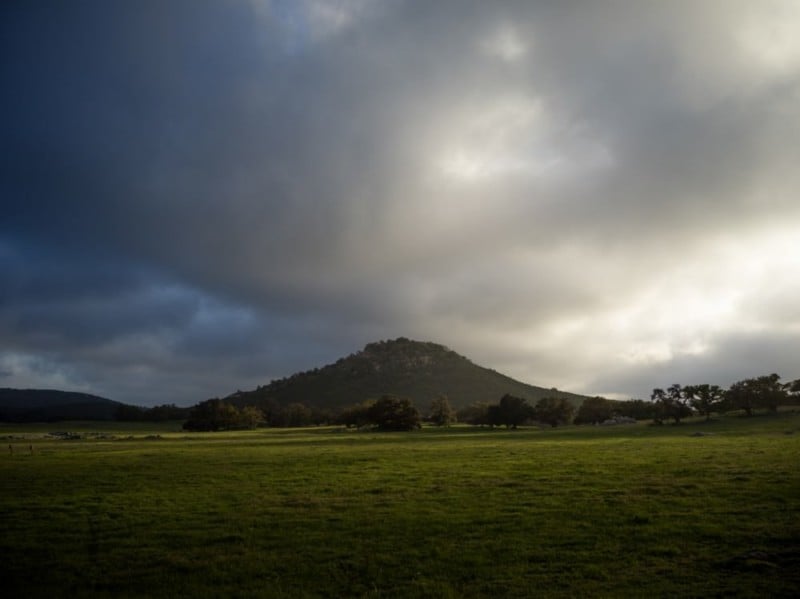
What makes the X1D special is that it’s the first of a new generation to forego the traditional optical viewfinder in a medium format camera and replace it with an electronic viewfinder. This means that when you look through the viewfinder, you’re looking at an electronic image, not an optical one viewed through a series of mirrors (hence the term “mirrorless”). The end result is a camera that’s smaller and lighter than traditional optical viewfinder cameras — a big deal when working with oversized and overweight medium format cameras.
For those not familiar with the notion of “medium format” cameras, (MF) the term refers to the fact that the image sensor of an MF camera is roughly double the size of a DSLR full frame camera like the Nikon D810 or Canon 5D and about three times the size of a “cropped” sensor like the Fuji XT2 or Nikon D500. The end result is a look and sharpness that is tough to attain through smaller format cameras.
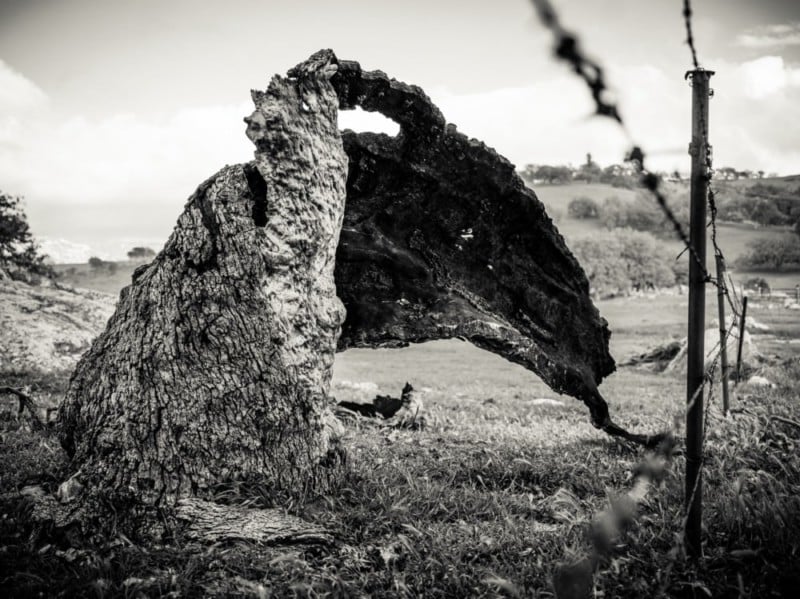
To be clear, what we’re talking about is the actual physical dimensions of the sensor used to capture light — which is not the same as the number of megapixels captured. For example, the X1D captures 50 megapixels, but so too does the smaller format Canon 5DS. The latter camera simply crams more pixels into a smaller sized sensor to achieve its resolution — whether there’s an advantage to one approach over the other is a debate that I’ll leave for those more technically minded.
I’m more interested in what works. Back in the film days, to be a working commercial photographer necessarily meant a heavy reliance on medium format cameras. For my advertising and editorial jobs, I used either the Mamiya RB67 or RZ67, both of which provided lusciously detailed images on 120mm film strips. Years later, after making the switch to digital, I chose to invest in the Hasselblad H system mainly for the fact that it offered higher sync speeds than that of small format — 1/800 second on the Hasselblad versus 1/250 for Nikon/Canon (more on sync speed later).
Up until a few weeks ago, when the X1D and its competition, the Fuji GFX, began shipping, the medium format world consisted of heavy, slow and clunky cameras best suited to commercial shoots where an assistant was present to help with the setup and operation of the camera. Using the Hasselblad H series for documentary and environmental projects was possible, but you really had to want to do it and you were often giving up a fair amount of speed and flexibility in the bargain.
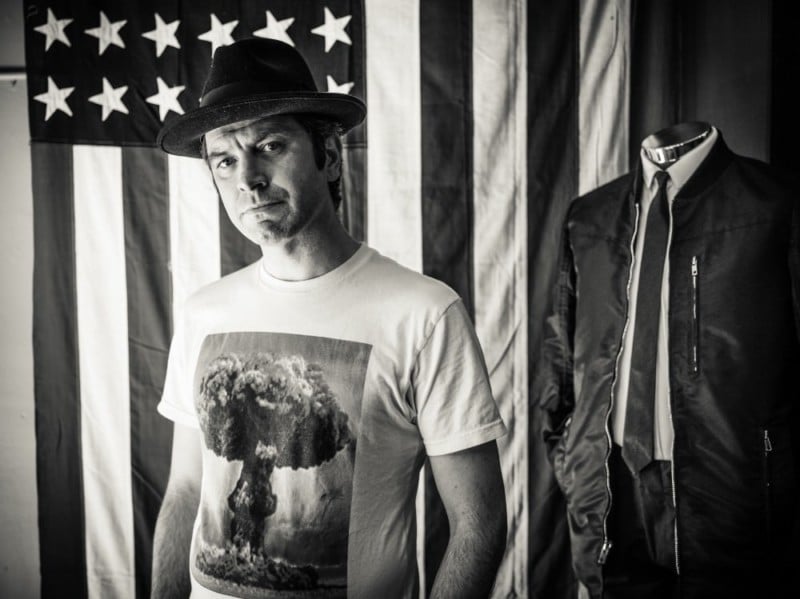
The X1D however opens up a new era for medium format photography. Gone are the bulk and the weight. In their wake, Hasselblad has delivered a camera that both looks stylish and feels great in the hand. To call its sculpted metal lines sexy is no overstatement. To see it sitting on the camera store counter is to want to pick it up. Once it’s in your hands, you’re loathe to put it down.
Where other digital medium format cameras contain their electronics in an expensive box jutting out the back, the mirrorless functionality and sculpted design of the X1D eliminates this obtrusive nuisance altogether. The end result is that the camera is slimmer than your typical DSLR. In fact, the X1D with 45mm lens (equivalent to a 35mm lens in small format) weighs two ounces less than the Nikon D810 with a 28mm f/1.8 lens. That’s both a first and nothing short of amazing!
What this means in practice is that the X1D is both capable and worthy of serving as a sling-over-the-shoulder walk around camera. In fact, my first tests with the camera were out on the streets and in the subways of Manhattan. To be effective for street photography, a camera must be both nimble and unobtrusive. The X1D scored on both counts.
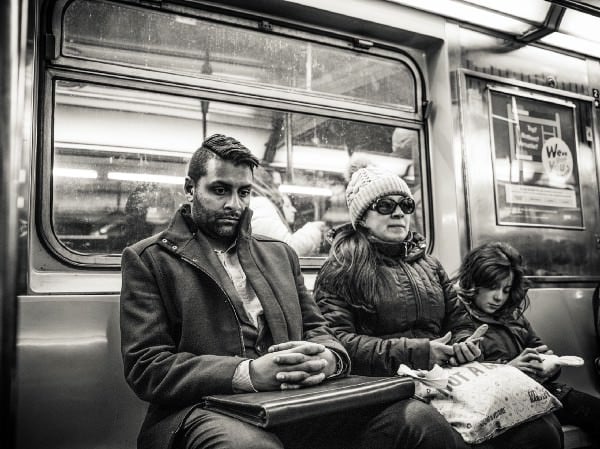

The camera’s street-worthiness extends beyond its slim physique. The camera is weather sealed so you don’t need to hide in terror at the first drops of rain. Also, unlike a DSLR that uses a curtain in the camera body for its shutter, the X1D employs a leaf shutter in the lens. The result is a soft clicking sound upon release that is both unlike and quieter than the sound of a traditional camera shutter — excellent for capturing people unawares.
Of note, when the shutter releases, it makes a soft sound and then a slightly louder click. It’s easy to assume that the second click is the actual shutter firing — which makes it seem like there’s a long delay in the release. In actuality, the shutter lag is minimal, just a few milliseconds slower than your average pro DSLR. The second click is merely the shutter resetting.
Also worth mentioning is the blackout that occurs for less than a second after each frame. At first it’s annoying, but I found that it’s short enough that I soon didn’t even notice it. What I’d like to see Hasselblad do is provide the option for the previous shot to appear on the EVF while it’s in blackout mode. I have my Fuji XT2 set to do this. It’s great for doing a quick review to check focus, expression and composition. Hint hint, Hasselblad!

To capture quickly unfolding scenes, one also needs a fast focusing system, be it through easy manual focus or speedy autofocus. Compared to the annoyingly slow and indecisive autofocus of the H series cameras, the X1D is quick and sure. No waiting for the AF to rack the lens in and out to find focus. To be sure, it’s not nearly as fast as the AF system on a pro DSLR so you can forget about nailing focus on moving subjects.
Another big advantage over previous MF systems is that the X1D offers an array of focus points that cover most of the image frame. No more center focus and recompose for every shot. The system lacks a joystick or button cluster for focus point selection as in many small format cameras (and the Fuji GFX) so changing focus points isn’t as intuitive as it could be. Still, it’s a significant improvement and I’ll take it.
A mirrorless camera is only as good the electronic viewfinder through which the image is viewed and composed. Again, the X1D scores well here. The viewfinder is bright, large and offers plenty of resolution. Perhaps it’s because I’m used to mirrorless cameras as a Fuji X100s and XT2 owner, but I hardly notice the fact that X1D doesn’t have an optical viewfinder. I did a quick test to measure how it refreshes compared to the Fuji XT2. When tracking a moving scene, the X1D hesitates where the XT2 performs smoothly. In practice though it’s not something you’re likely to ever notice. (Just so we’re clear on this, the X1D is not a sports camera.)
The preview image on the LCD is high-resolution and crisp; far superior than those displayed on my H5. Plus the LCD is fully touchscreen capable. Zooming in to 100% is a simple double tap on the preview image where you’d like to view the details. Shutter, aperture and ISO settings may be changed via the LCD or front and rear dials. Tap on the setting you wish to change and a drop down menu appears. A quick swipe side-to-side switches between preview images and a down swipe brings up the camera settings.
Though it takes a little getting used to, the touchscreen LCD soon proves itself to be quite convenient and useful. It’s also worth noting that settings may be changed on the fly while shooting using the usual buttons and dials. In general, the settings menu is easy to use and, unlike most smaller format cameras, lacks the seemingly infinite number of menus and submenus that must be waded through to change some obscure-but-necessary setting.
One big question among experienced mirrorless camera shooters is how long the batter will last? Most mirrorless cameras suck down the batteries. I won’t go out shooting with my XT2 without two to three batteries in my pocket. I haven’t done a straight up test, but so far, the X1D battery has done well in comparison. I’ve managed to make it through a day of moderate shooting on just one battery. That’s fortunate because, as of this writing, Hasselblad has not yet delivered any spare batteries to the US.
ISO Usability
My first experience with digital medium format nearly ended with disaster. I was used to small format DSLR’s which could easily handle higher ISO’s, especially anything in the ISO 400 range. Without testing the Hasselblad H2 and Phase One digital back that I rented, I did a shoot where I was forced to set the ISO to 200; I almost cried when I saw the excessively noisy results. In the 10 years since then, things have improved: ISO 800 on my H5 is useable — in an atmospheric way.
The X1D tosses out all previous expectations. High ISO? No problem. ISO 6400 is completely usable with plenty of highlight detail and acceptable noise in the shadow areas. An 11×14 print of the ISO 6400 image below has a sort of pushed Tri-X film look to it.

The X1D has the option of extending the ISO all the way to 25,600 — so of course I had to check it out. I expcted to see a blotchy mess. Well, I got some noise, but overall it’s pretty darn usable and surprisingly detailed. Throw in some Lightroom noise reduction and you’ve got something you can take to the bank.
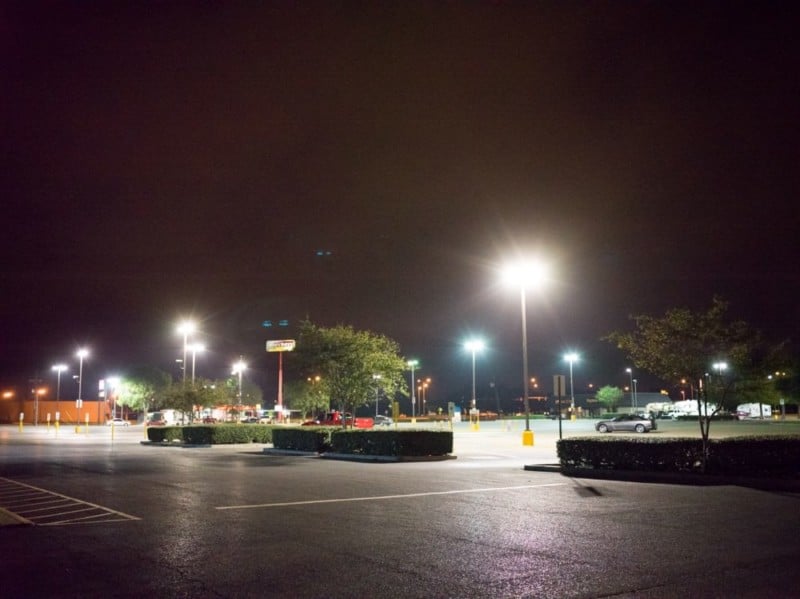
Not only are high ISO’s possible but so too are slow shutter speeds. Where the H5’s shutter closes with a destabilizing kachunk that introduces camera shake at all but higher speeds, the soft shutter closing of the X1D facilitates sharp images even at lower shutter speeds. A practiced hand can produce acceptable images with the 35mm lens at 1/15 second if not slower.

All in all, the X1D is such an easy camera to work with that it’s now become my daily driver — my go to camera for projects large and small. This to me is a revolution. As much as I like the images that come from my H series camera, there’s no way I’d grab it first. The H5 and its siblings are too big, bulky and slow. The X1D has changed all that. In this way, Hasselblad created a revolution in what’s possible with medium format and how it may be used.
Let’s Talk Tethering
While most photographers may never bother with tethered shooting, if you’re a commercial photographer, consistent and easy tethering is essential for a smooth shoot. As of this writing, tethering only works with the Hasselblad Phocus software. Unlike the H series, the X1D won’t capture directly to Lightroom (though LR will open X1D raw files without any conversion). Capture One is not an option for either camera series.
The good news is that tethering is easy and straightforward. Just plug in the supplied mini USB 3.0 cord, open Phocus, click the tethered capture button and you’re good to go. A quick word on Phocus, from what little I’ve used it, it’s a capable and fairly intuitive image editor. Though I much prefer Lightroom (even over Capture One), Phocus gets the job done.
Live view — the ability to see what the camera sees through the computer monitor — is also available through Phocus. Though it’s not an issue in the default view, I’ve not figured out how or if the software can control the camera settings when using live view.
Image Quality
Just as you’d expect with a camera at this price point and accompanying specs, the X1D delivers stunningly sharp images with excellent color and astounding detail. You’ll have no problem digging out shadow detail and recovering seemingly blown highlight information from the raw files. The color is neutral without being flat. The transition from highlight to 100% white is smooth and natural looking.
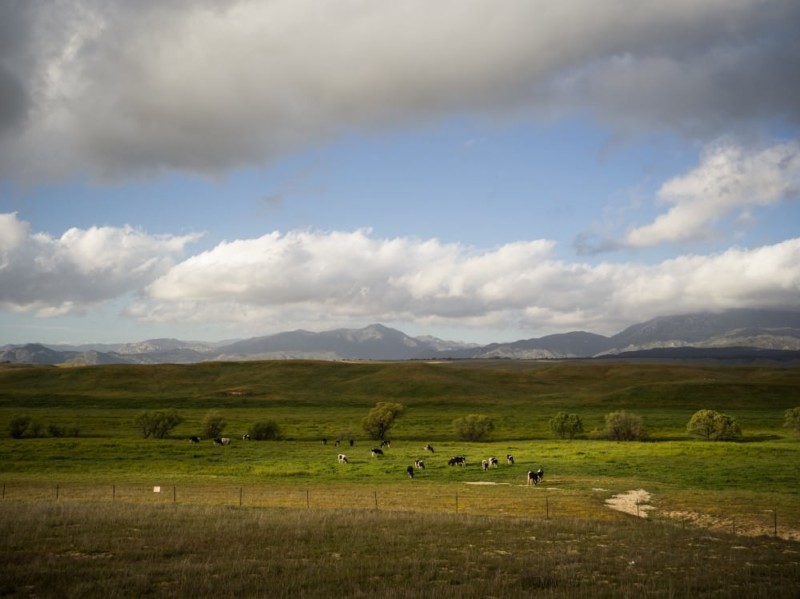
Here’s a tight crop of the photo above. Detailed and sharp enough for you?
![]()
The Optics
I purchased my X1D with the 45mm f/3.5 lens. The lens mostly does its job with minimal distortion and chromatic aberration. It does however display significant vignetting. Although Hasselblad goes out of their way to explain that this is normal for a wide-angle lens, I found it to be excessive for a lens in this price range. It’s one thing if it’s a cheap zoom lens but another when it’s a moderately wide $3,000 prime lens.
The vignetting often looks good as a creative effect but it becomes a problem when you’re stitching panoramas together or you just want an evenly exposed scene. The vignetting is correctable in Phocus when using the preset for this lens. In Lightroom, I correct for it using the profile for the 50mm HC lens and then cranking the vignette correction slider all the way to the right. (I eagerly await a Lightroom profile for this lens.)
This top image is straight out of camera except for density adjustments; the bottom image is after Lightroom adjustments for vignetting:


As of this writing, Hasselblad has not yet shipped their lens adapter that allows their legacy autofocus HC lenses to be used on the X1D. I’ll be interested to see how the 50mm HC compares to the new 45mm X1D. Stay tuned for more on that.
The Bugs
I once described the sleek, sexy X1D as a Ferrari. Someone corrected me by saying it was more like a Telsa. I had to agree. The camera sure looks and feels great, but with all of its new electronics and touchscreen interface, it’s not without its share of bugs. My situation is a bit unique however. I’m dealing with a couple of flaws that go beyond just registering as bugs and are forcing me to send the camera into Hasselblad for inspection and possible exchange or repair.
Specifically, my camera won’t allow me to fire the shutter when the shutter release is half way depressed. Often I find myself double tapping the shutter release to take a photo. Also, the EVF intermittently becomes horribly posterized when the exposure preview is turned off — a necessity when I’m shooting with strobes — and my forehead is pressed against the eyecup. Yeah I know, weird.
There are other issues that may just be bugs in the new firmware — for example sometimes it’s difficult to change the LCD brightness. No matter how I try to tap the screen to move the slider, sometimes it just won’t budge. Getting into the f/3.5 aperture is sometimes an issue. f/4.0 is not an issue, but often I find myself clicking the front dial in and out to get the lens into f/3.5. Whether these are firmware bugs or symptomatic of my screwed up camera, I don’t know.
On the positive side, Hasselblad has been regularly issuing new firmware upgrades since they began delivery of the camera back in December. One thing I’d like to see is the abililty to view the histogram in the EVF. That’s standard issue in every other mirrorless so I don’t see why it can’t be added here. Hopefully, the various issues will be worked out and features added sooner rather than later.
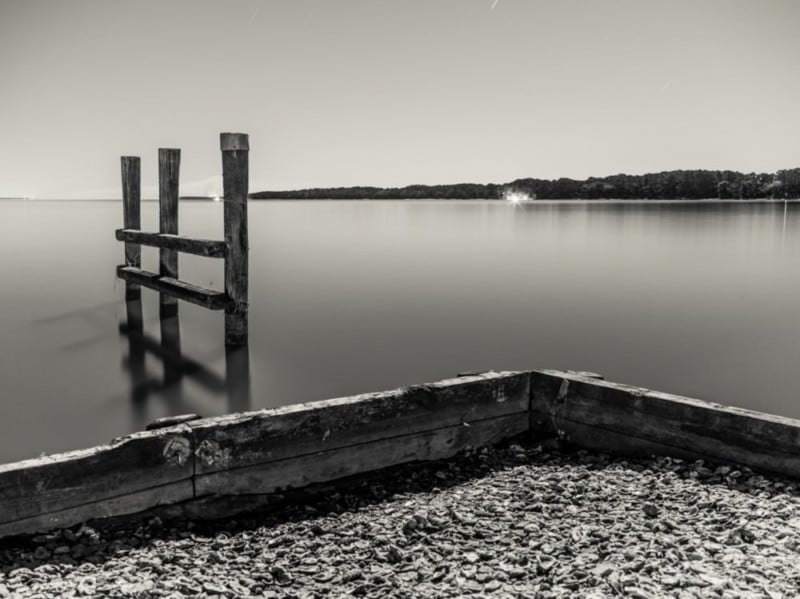
While we’re on the subject of cameras in need of repair, I’ll touch on the topic of Hasselblad service. It’s fine, though expensive, if your repair can be performed in the USA at the headquarters in New Jersey. My H5 recently required its IR filter to be replaced due to two tiny scratches. Because Hasselblad USA couldn’t perform the repair, it went to Sweden. It’s now been over two months since I’ve seen my camera and I’ll be lucky to see it back inside of three months.
I’m not eager to see what happens with my faulty X1D. Hopefully they’ll replace it. If they don’t, I suspect it will be months until I see it again. I’ll just finish this up by saying that, if you purchase Hasselblad, make sure you’ve got a good backup on hand.
Hasselblad versus Fuji
Not long after Hasselblad announced the X1D, Fuji followed up with an announcement of their own long-rumored mirrorless medium format, the GFX. As a happy owner of several Fuji cameras, I was eager to see what they had come up with. However, when I compared the GFX with the X1D in the camera store, I disappointedly rejected it.
![]()
First, where the Hasselblad’s slim design makes it not just look good in hand but easy to use out in the real world, the Fuji GFX hewed to the more boxy, chunky styling of a traditional medium format camera. Now I’m not saying that I’d reject the Fuji just because it looks like a minivan, but when the two cameras sit side by side, the European sports car, aka Hasselblad, is far more alluring. The physical styling does have practical considerations too: While one could use the GFX as an all-around regular use camera, its more full-figured shape and extra weight means that there is less chance that one actually would.
The real deal breaker for me however was the GFX’s shutter sync speed — at 1/125 it’s nowhere near fast enough for me. In order to shoot with a flash outside in sunlight, higher sync speeds (typically above 1/350) are necessary. For me, this one little spec was a deal breaker. It’s too bad though because the other specs on that camera do look good indeed.

Note: I’m sure some will comment that there will soon be a high-speed sync (HSS) flash option for the Fuji. We’re not there yet however. Plus, I usually shoot using higher apertures of f/11 to f/16 — which is just not possible with HSS. Sometimes there’s no substitute for a higher sync speed and raw strobe power.
Final Thoughts
Because the X1D is so light and responsive, it’s tempting to hold it to the same standard as small format cameras and compare it accordingly. By that yardstick, the X1D feels like a sluggish DSLR from circa the mid-2000’s. (I actually like to think of it as an inflated Fuji X100s.) Flip that around and compare it to previous Hasselblad and Mamiya-based medium format cameras and you have a much different story. With its comparatively agile performance and high pixel count, the Hasselblad X1D is the camera I want to shoot with every day for portraiture, landscapes, studio and street work.
It’s a fair question to ask however if the X1D is worth the money — $13,000 for body and lens. For most photographers, the answer is probably not. If you’re looking for the ultimate in pixel count and resolution, you’ll probably prefer the top of the line, 100 megapixel offerings from Hasselblad and Phase One. If you’re like most professional photographers (or advanced amateurs) seeking a high-resolution camera, affordability is an issue. For most, the Nikon D810, Sony A7 RII or Canon 5Ds will fit the bill at a fraction of the price of the Hasselblad and little discernable difference in image quality.
On the other hand, for those photographers working in the contemporary art world where work is often printed at grandiose sizes, this camera hits the sweet spot. I can see fashion photographers flocking to this lighter-weight, more flexible option to the getting-old-in-the-tooth H2 camera bodies melded to Phase One backs. (Fashion shooters who fondly remember the old Pentax 67 film camera will love the X1D.)
If you’re an existing Hasselblad H series owner who’s looking to upgrade, mark my words, this will be your camera. Rental users are also likely to flock to the X1D; I’m seeing it available for rent in camera rental departments for half the price of Hasselblad H series kits. I have no doubt that we’ll be seeing a lot of the X1D in not too distant future.
While I can’t say with any finality whether this camera is worth it for anyone else, I can say that you’ll do better trying to wrench a soup bone out of a pit bull’s mouth than to wrest the X1D from my firmly clenched grip. I’m keeping mine.
About the author: John Raymond Mireles is a professional photographer based in San Diego, California. The opinions expressed in this article are solely those of the author. You can find more of his work on his website, Twitter, Facebook, and Instagram. This article was also published here.





